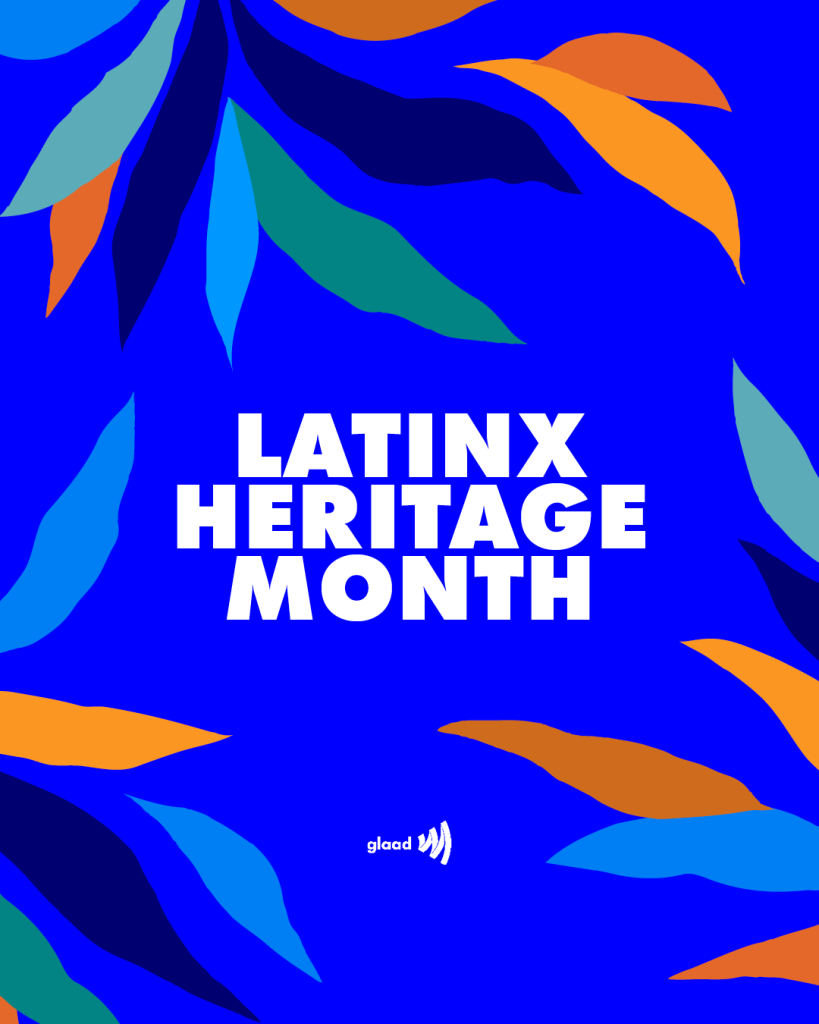Happy Latine Heritage Month, or Hispanic Heritage Month or Latinx Heritage Month! There are a lot of ways to describe us! At GLAAD we use both Latinx and Latine at this moment in time. Why say ‘at this moment’? Because language evolves as people shape it to be more inclusive and generous and to better describe the world, which itself evolves constantly.
Linguistic changes over time and the adoption of words like Latino or Chicano, are described in this New Yorker article by Graciela Mochkofsky. Historically, the words Latinx people use to describe ourselves – particularly communities in the U.S. with a shared history, language or culture – have always been in flux. Today, Latine and Latinx are gender-neutral ways of referring to people from (or whose ancestors are from) Mexico, Central America, South America, and the Caribbean living in the United States. Sometimes it’s used broadly to describe diasporic communities beyond the U.S. We include Latine because it’s being used more than ever as an alternative or companion to Latinx. The website Call Me Latine, further explains the term: “Latine (pronounced la·ˈti·ne) is a gender-neutral form of the word Latino (a collective term with a traditionally masculine ending in Spanish) created by LGBTQIA+, gender non-binary, and feminist communities throughtout Latin America.”
We choose to use these words when speaking broadly about the Latine community because our community includes people of all genders and our language should reflect that. Latine and Latinx are not meant to replace how you prefer to describe yourself – they are merely options on a spectrum. And as recommended in our media guide, individuals should always be referred to with the language they use to describe themselves – whether that’s Latina, Latino, Latinx, Latine, or any other descriptor that has or will exist.
Whatever term you like to use, there’s also a lot to celebrate – and why not use the opportunity this month offers us to elevate the incredible work we’re doing across our communities in the U.S. and beyond? Spanish-Language music tops the charts, many of the leaders, artists and athletes we admire are Latine. Latinx people also account for strong economic growth. Many of the people who come to our rescue in an emergency, who grow the food that feeds us and who teach our children are Latine. It’s not all roses and chocolates, of course. Some find ways to “blame” Latinx immigrants for economic or social woes. The irony is enough to make you scream sometimes. Or cry. Or both. Racism still impacts people daily, as do anti-immigrant bias and colorism.
Many of us feel frustrated at the still disproportionately low levels of Latine representation in the media despite growing population numbers, and we are tired of the stereotypes that still exist about LGBTQ Latine people in particular. To help inspire better, more accurate storytelling, our Spanish-Language Media team created a new guide specifically for creators working in the U.S., Latin America and Spain. Their films and shows, which reach billions of viewers, should and can be more LGBTQ-inclusive.
Most definitely, there’s a lot of work to do, to keep pushing for less divisiveness and a lot more celebration and unity. To embrace and respect our differences while leaning into the shared experiences that bring us together, even if it’s under an imperfect and ever-changing umbrella term. To turn representation and visibility into meaningful change.
We hope you enjoy the month and find a way to celebrate yourself, your friends and family and/or the people doing amazing things every day across all fields—many of them Latine and LGBTQ.













